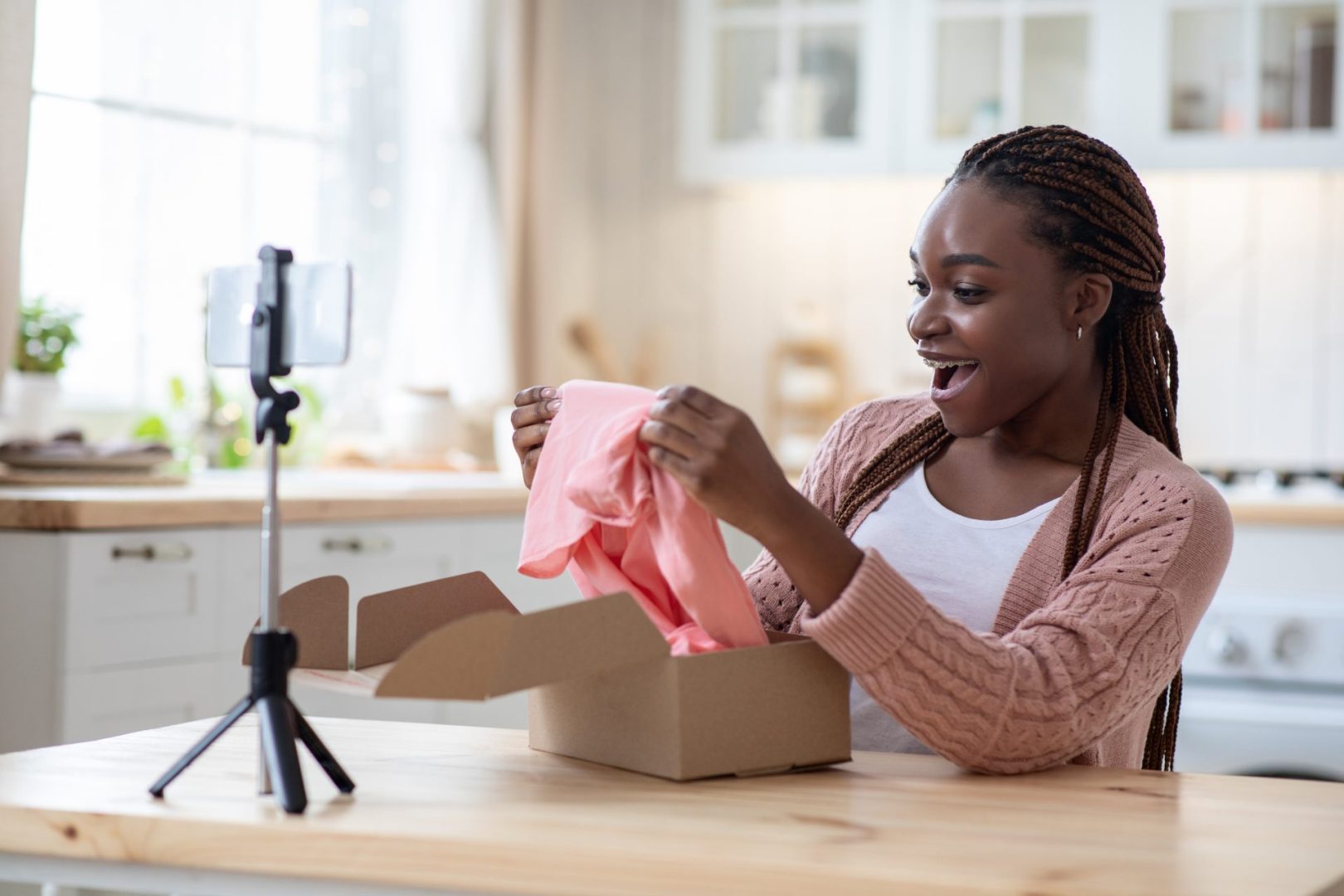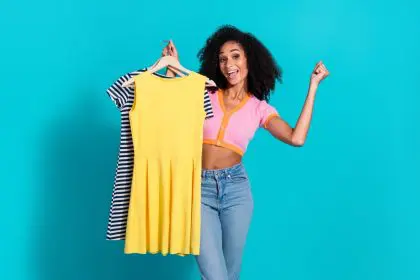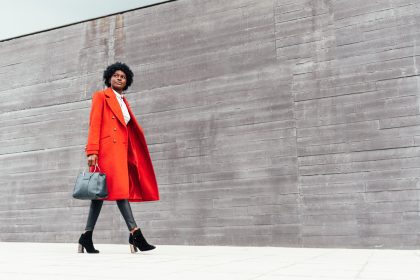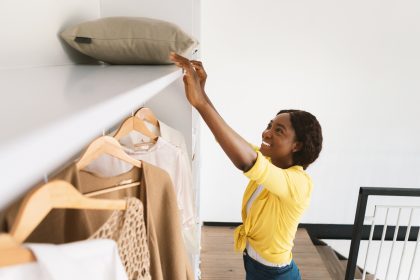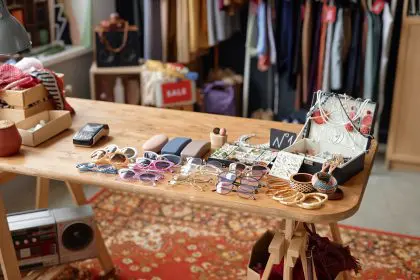The magnetic pull of fashion influencer photos lies not just in expensive clothing, but in the masterful way they layer, mix, and style accessories to create looks that feel effortlessly chic yet impossibly polished. These digital style mavens have cracked the code of making simple outfits appear editorial-worthy through strategic accessory choices that elevate everything they touch.
What separates influencer styling from average accessorizing goes far beyond having access to luxury pieces or endless shopping budgets. The real magic happens in understanding proportion, color theory, texture mixing, and the art of creating visual interest through carefully curated combinations that tell a cohesive style story.
The psychology behind influencer accessorizing taps into aspirational desires while remaining surprisingly achievable for everyday fashion enthusiasts. By understanding the fundamental principles that guide their choices, anyone can recreate that coveted influencer aesthetic using pieces they already own or affordable alternatives that deliver similar visual impact.
The systematic approach influencers take to accessorizing transforms random jewelry and bags into intentional style statements that photograph beautifully and translate seamlessly from digital screens to real-world wear. This methodology makes their seemingly effortless looks reproducible for those willing to learn the underlying strategies.
The layering formula that never fails
Strategy 1: Fashion influencers have mastered the art of jewelry layering by following specific formulas that create depth and visual interest without appearing cluttered or overwhelming. The key lies in mixing different chain lengths, pendant sizes, and metal tones according to mathematical principles that ensure balanced, harmonious combinations.
The necklace layering technique typically involves three distinct lengths: a choker or short chain that sits at the base of the neck, a medium-length piece that falls just below the collarbone, and a longer chain that reaches the chest area. This creates a cascading effect that draws the eye downward while adding dimension to the neckline.
Ring stacking follows similar principles, with influencers combining different band widths, textures, and stone sizes across multiple fingers to create cohesive collections rather than random assortments. The trick involves balancing statement pieces with delicate bands, ensuring no single finger becomes too heavy while maintaining visual flow across the hand.
The layering approach extends to bracelets and arm candy, where influencers mix watch styles with delicate chains, chunky cuffs, and beaded pieces. The key is varying textures and scales while maintaining a consistent color palette or metal family that ties the entire look together seamlessly.
The statement piece balancing act
Strategy 2: Influencers understand that statement accessories require careful balancing to avoid overwhelming the overall look or competing for attention. The fundamental rule involves choosing one focal point per outfit and building the remaining accessories around that central piece in supporting roles.
When featuring bold earrings, successful influencers typically minimize necklaces or choose very delicate chains that won’t compete with the ear area. This allows the statement earrings to command attention while maintaining overall outfit harmony and preventing visual chaos that can occur when multiple bold pieces fight for dominance.
Statement bags receive similar treatment, with influencers choosing simpler jewelry when carrying eye-catching purses or bold handbag colors. The bag becomes the outfit’s exclamation point, while other accessories provide subtle support that enhances rather than distracts from the main attraction.
The statement piece strategy also involves considering the outfit’s existing elements, including patterns, colors, and silhouettes. Influencers skillfully choose statement accessories that complement rather than clash with these existing focal points, creating cohesive looks that feel intentional rather than accidental.
The color coordination masterclass
Strategy 3: Fashion influencers approach color coordination in accessories with sophisticated understanding of color theory that goes beyond simple matching. They create visual harmony through complementary colors, analogous combinations, and strategic use of neutrals that tie diverse elements together beautifully.
The monochromatic approach involves using different shades and tones of the same color family across multiple accessories, creating depth and interest while maintaining cohesion. This technique works particularly well with neutrals like beiges, grays, and blues that offer extensive tonal variations without becoming boring or predictable.
Complementary color pairing involves choosing accessories in colors that sit opposite each other on the color wheel, creating dynamic tension that energizes the overall look. Influencers might pair coral jewelry with turquoise bags or yellow accessories with purple undertones, creating combinations that feel fresh and unexpected.
The neutral bridge technique uses neutral-toned accessories to connect bolder color choices in clothing and other accessories. A nude handbag might bridge the gap between a colorful dress and metallic shoes, while gold jewelry can unify warm-toned pieces that might otherwise feel disconnected.
The texture mixing revolution
Strategy 4: Successful fashion influencers create visual richness by mixing textures across their accessory choices, combining smooth metals with rough fabrics, sleek leather with woven materials, and shiny surfaces with matte finishes. This texture play adds dimensional interest that photographs beautifully and feels luxurious in person.
The high-low texture combination pairs refined elements like silk scarves or patent leather with more casual textures like canvas bags or rope jewelry. This juxtaposition creates sophisticated looks that feel approachable rather than intimidating, perfect for influencers who want to appear relatable while showcasing style expertise.
Seasonal texture coordination involves choosing accessories that reflect the time of year through material choices. Summer looks might feature woven bags, beaded jewelry, and lightweight scarves, while winter accessories include fur textures, chunky knits, and rich velvet materials that feel appropriate for the season.
The texture gradient technique involves moving from fine to coarse textures across the accessories in a single look, creating visual flow that guides the eye naturally around the outfit. This might involve pairing delicate chain jewelry with medium-textured leather bags and ending with chunky knit scarves or textured shoes.
The proportion play that creates magic
Strategy 5: Understanding proportion relationships allows influencers to create visually pleasing combinations that flatter their body type while creating the illusion of perfect balance. This involves considering the scale of accessories relative to body size, outfit proportions, and other accessory choices.
The contrast proportion strategy pairs oversized accessories with delicate pieces to create dynamic visual interest. Large statement earrings might be balanced with thin, delicate bracelets, while chunky necklaces pair beautifully with small, refined rings that don’t compete for attention.
Body proportion consideration involves choosing accessory scales that complement natural body proportions rather than fighting against them. Petite influencers often choose smaller-scale accessories that don’t overwhelm their frame, while taller individuals can carry larger pieces that would look disproportionate on smaller bodies.
The outfit proportion relationship considers how accessories relate to clothing silhouettes and fit. Flowing, oversized clothing might call for more structured accessories that provide definition, while fitted outfits can handle softer, more fluid accessory choices that echo the clothing’s sleek lines.
The investment piece philosophy
Strategy 6: Fashion influencers approach accessory shopping with strategic thinking about investment pieces that offer maximum versatility and longevity. These foundational accessories serve as building blocks that can be styled countless ways across different seasons and trends.
The classic handbag investment typically involves choosing neutral-colored bags in timeless shapes that complement multiple outfit styles and color palettes. These workhorses appear repeatedly in influencer content because they provide reliable style solutions that never look dated or out of place.
Quality jewelry investments focus on pieces that can be worn alone as statements or layered with trendier, less expensive pieces for variety. A well-made gold chain necklace or classic watch becomes the foundation for countless looks, justifying the higher initial cost through cost-per-wear calculations.
The shoe investment strategy involves choosing footwear in neutral colors and classic styles that can transition across seasons and occasions. These versatile pieces anchor countless outfits while providing the reliability that busy influencers need for consistent content creation.
The seasonal transition secrets
Strategy 7: Successful influencers master the art of transitioning accessories across seasons, extending the life of pieces while keeping looks fresh and weather-appropriate. This involves strategic layering, color shifting, and material swapping that maintains style consistency year-round.
The layering transition technique adds seasonal elements to existing accessories rather than completely replacing them. Summer jewelry might gain autumn scarves or winter hats, while maintaining the core pieces that define personal style and brand consistency.
Color temperature shifting involves moving from warm-toned accessories in autumn and winter to cooler tones in spring and summer. This subtle change keeps looks seasonally appropriate while maintaining the sophisticated color coordination that defines influencer styling.
Material season coordination chooses accessories in materials that feel appropriate for the weather and seasonal activities. Light, breathable fabrics dominate summer accessories, while richer, more substantial materials appear in fall and winter collections.
The occasion adaptation formula
Strategy 8: Fashion influencers seamlessly adapt their accessory choices to different occasions while maintaining their signature style aesthetic. This involves understanding dress codes, environmental considerations, and social contexts that influence appropriate accessory selection.
The day-to-night transition technique involves choosing accessories that can easily shift from casual daytime activities to more formal evening events. Delicate jewelry that works for coffee dates can be layered with additional pieces for dinner parties, while structured bags transition from work to social settings.
The activity-appropriate selection considers the practical requirements of different activities while maintaining style standards. Athletic activities might feature fashion-forward sneakers and sleek water bottles as accessories, while beach days call for stylish sun hats and chic sunglasses that provide function and fashion.
The dress code interpretation skill involves understanding formal and informal requirements while finding creative ways to express personal style within those constraints. Business casual environments might feature statement watches and structured bags, while weekend gatherings allow for more creative accessory experimentation.
The mixing metal mastery
Strategy 9: Modern fashion influencers have abandoned the old rule about not mixing metal tones, instead creating sophisticated combinations that add visual interest and versatility to their accessory collections. This approach requires understanding which metals complement each other and how to balance different tones harmoniously.
The warm and cool metal combination pairs gold and silver tones in strategic ways that create contrast without clash. This might involve wearing gold jewelry with silver hardware on bags and shoes, or mixing rose gold pieces with traditional silver chains for dimensional interest.
The metal gradient technique involves transitioning from one metal tone to another across different accessories, creating visual flow that feels intentional rather than accidental. This might start with gold jewelry at the neckline and transition to silver accessories at the waist and feet.
The mixed metal jewelry approach involves choosing pieces that inherently combine multiple metal tones, serving as bridges between different metallic accessories. Two-tone watches, mixed metal rings, and jewelry featuring multiple finishes help unify diverse metallic elements in a single look.
The capsule accessory wardrobe
Strategy 10: Influential stylists build capsule accessory collections that offer maximum mixing potential with minimum investment. This strategic approach ensures every piece works with multiple others, creating exponential styling possibilities from a carefully curated selection.
The foundational pieces include versatile items that serve as building blocks for countless combinations. These typically include a classic watch, neutral handbag, statement earrings, delicate necklaces, and quality sunglasses that can anchor numerous looks while providing consistent style direction.
The accent pieces add personality and trend elements to the foundational collection without overwhelming the overall aesthetic. These might include seasonal scarves, trendy jewelry, colorful bags, or unique shoes that inject freshness while maintaining compatibility with core pieces.
The special occasion additions provide options for elevated events and formal situations without requiring complete wardrobe overhauls. A few carefully chosen statement pieces can transform casual foundations into elegant ensembles suitable for dressy occasions.
The photography consideration factor
Strategy 11: Fashion influencers choose accessories with photography in mind, understanding how different materials, colors, and shapes translate through camera lenses and social media filters. This consideration affects everything from reflective surfaces to color saturation in their final content.
The camera-friendly materials avoid pieces that create unwanted reflections or appear differently in photographs than in person. Matte finishes often photograph more consistently than highly reflective surfaces, while certain metallic tones complement popular filter aesthetics better than others.
The visual weight balance ensures accessories provide enough contrast and definition to show clearly in photographs without overwhelming the overall composition. This might involve choosing slightly bolder pieces than would be necessary for in-person wear to ensure they register effectively in digital content.
The background consideration involves choosing accessories that will stand out against common background choices and photography settings. Neutral backgrounds might call for more colorful accessories, while busy environments require simpler pieces that won’t get lost in visual chaos.
The authenticity maintenance strategy
Strategy 12: Successful fashion influencers maintain authenticity in their accessory choices by developing signature styling elements that reflect genuine personal preferences rather than following every trend blindly. This consistency builds recognizable personal brands while keeping styling choices relatable and achievable.
The signature element development involves identifying specific accessory types, color preferences, or styling techniques that become associated with individual influencer brands. This might be a particular jewelry layering style, consistent bag choices, or unique ways of wearing scarves that followers come to expect and recognize.
The trend interpretation skill involves adapting popular accessory trends to fit established personal aesthetics rather than adopting them wholesale. This selective approach maintains style consistency while keeping content fresh and current with broader fashion movements.
The personal story integration weaves meaningful accessories into content in ways that feel genuine rather than purely commercial. Family heirloom jewelry, travel souvenirs, or pieces with personal significance create authentic connection points that resonate with audiences seeking relatable style inspiration.

